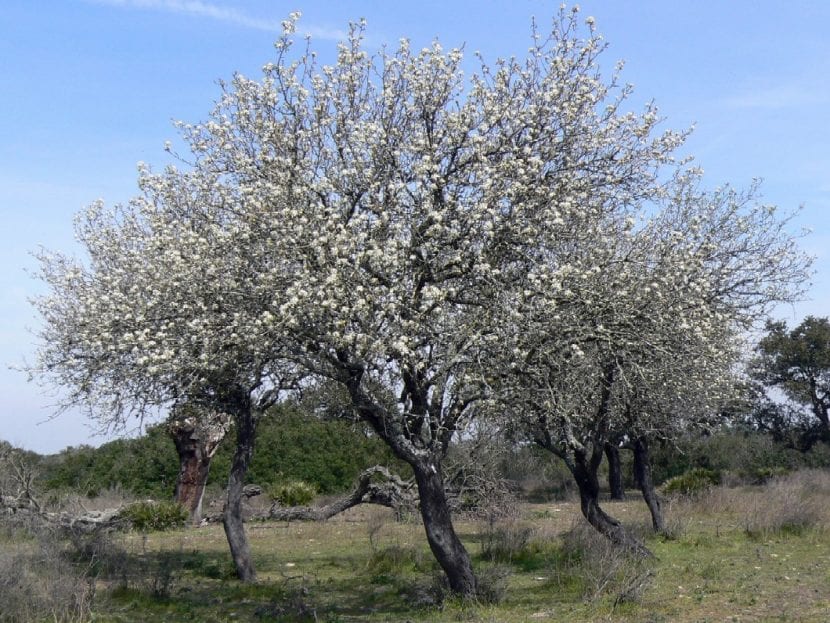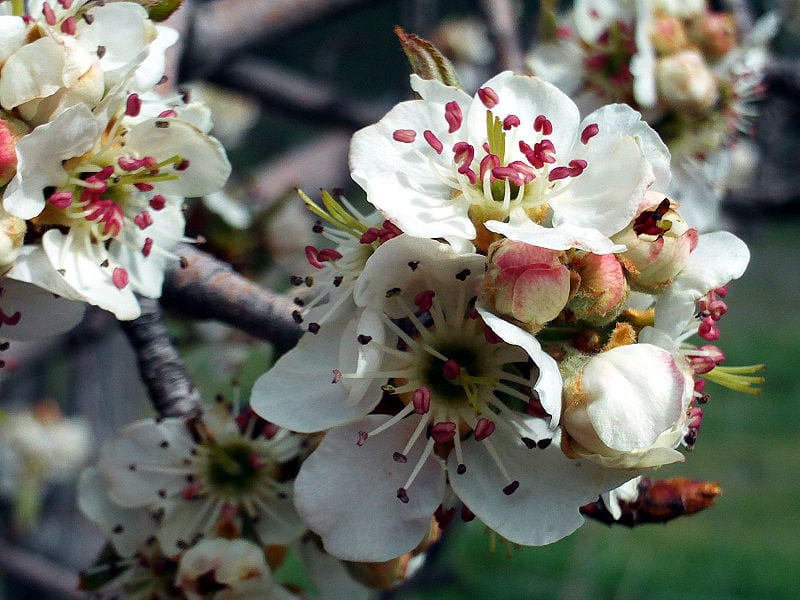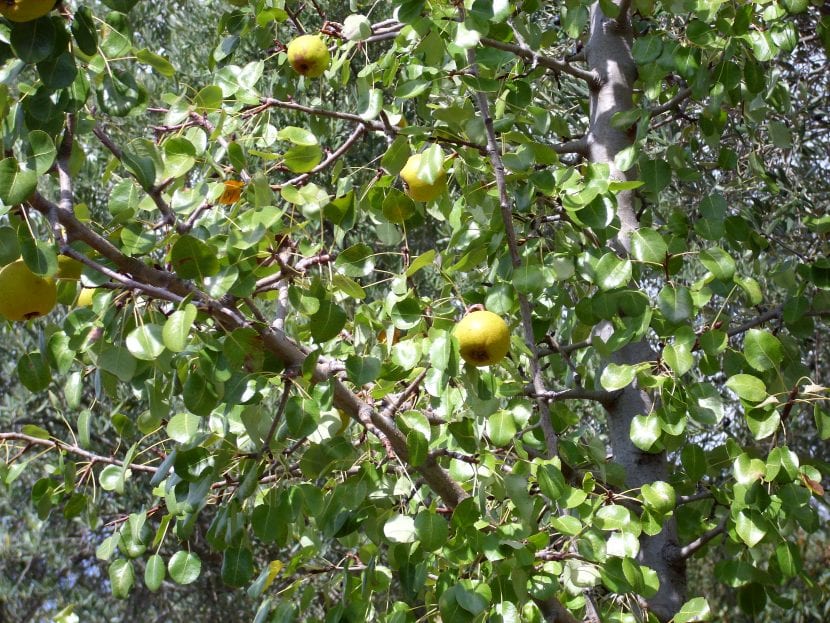
Image - Wikimedia / Bourgaeana
In the Mediterranean forest we can find a deciduous tree that turns out to have great ornamental value: the Bourgaean Pyrus. That name may not sound familiar to you, so you should know that it is called wild pear or pyrutane.
Being native… where it comes from 🙂, where rainfall is rather scarce and summer temperatures are quite high (40-43ºC maximum), it is a very interesting species to grow in regions where it rains little and in summer it is quite hot. Take a look and get to know it.
Origin and characteristics

El Bourgaean Pyrus, known as wild pear, Iberian pear, galapero, perotonero or piruétano, It is a deciduous tree native to the Mediterranean forest that reaches a height of 5-6 meters. Its branches are thorny, and form an open crown. The leaves are petiolate, ovate and with a toothed margin.
Blooms between late winter and early spring (from February to March in the northern hemisphere). The flowers have five white or pinkish sepals and several stamens. The fruit is fleshy, has the shape of a spherical pear, and the pulp is sandy. This finishes ripening in autumn.
Uses
It is used as an ornamental plant, although the most popular use is to serve as a sturdy base for grafting other fruit trees. The fruit it produces is not toxic, but as it has a very harsh taste, it is not usually consumed.
What are their cares?
If you want to have a copy, we recommend you take care of it in the following way:
- Location: it must be outside, in full sun.
- Earth:
- Pot: universal growing substrate.
- Garden: grows in clay soils, well drained.
- Irrigation: will be moderate. In general, you have to water it about 3 times a week in summer, and every 4-7 days in winter. From the second season, if it is planted in the ground, you can reduce the risks.
- Subscriber: in spring and summer you can take it from time to time guano, manure, or others ecological fertilizers.
- Multiplication: by seeds in spring.
- Rusticity: it resists frosts down to -7ºC. It cannot be grown in climates without frost.

What did you think of the Bourgaean Pyrus?